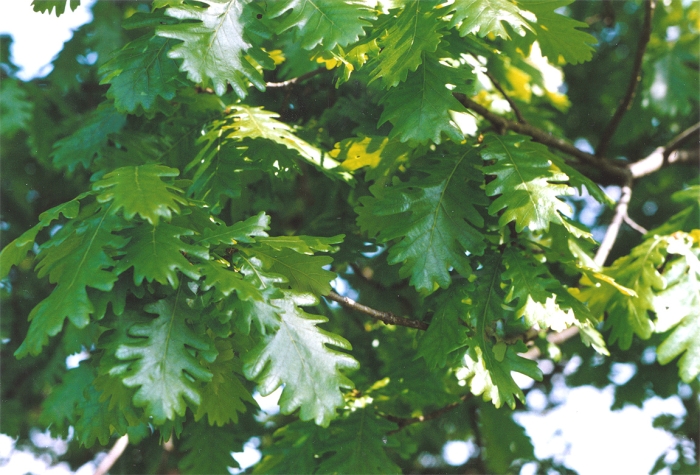Italian Oak
(Quercus frainetto)
Italian Oak (Quercus frainetto)
/
/

Somepics
CC BY 3.0
Image By:
Somepics
Recorded By:
Copyright:
CC BY 3.0
Copyright Notice:
Photo by: Somepics | License Type: CC BY 3.0 | License URL: https://creativecommons.org/licenses/by/3.0 | Uploader: Somepics | Publisher: Wikimedia Commons | Title: Quercus_frainetto_kew2.jpg | Notes: |













Estimated Native Range
Summary
Quercus frainetto, commonly known as Italian Oak, is a deciduous tree native to the mixed deciduous forests and Balkan mixed forests of Southeastern Europe and Turkey. It is a stately tree that can reach up to 38 meters (125 feet) in height and 20 meters (66 feet) in width, with a trunk circumference approaching 2 meters (7 feet). The bark is a distinctive light gray, developing into small, square, cracked plates as the tree matures. The buds are notable for their size, being long, pointed, and shiny russet or light brown with a fine tomentum. Twigs are robust and covered with upward-pointing russet hairs. The foliage is concentrated at the twig ends, with leaves turning shades of brown, russet, or yellow in the fall, occasionally persisting through winter until spring. The acorns, which mature in about 6 months, are light brown and nestled in cups adorned with long, overlapping scales and russet hairs, typically clustering in groups of two to eight.
Italian Oak is valued for its grand stature and the shade it provides, making it a popular choice for parks and large gardens. The cultivar ’Hungarian Crown’ has been recognized with the Royal Horticultural Society’s Award of Garden Merit, highlighting its horticultural appeal. This oak species requires full sun exposure and medium water availability, thriving in soils with medium to fast drainage. While it is generally low-maintenance, it can be susceptible to oak wilt and other fungal diseases. Gardeners should be aware of its potential to spread if not managed properly in non-native areas.CC BY-SA 4.0
Italian Oak is valued for its grand stature and the shade it provides, making it a popular choice for parks and large gardens. The cultivar ’Hungarian Crown’ has been recognized with the Royal Horticultural Society’s Award of Garden Merit, highlighting its horticultural appeal. This oak species requires full sun exposure and medium water availability, thriving in soils with medium to fast drainage. While it is generally low-maintenance, it can be susceptible to oak wilt and other fungal diseases. Gardeners should be aware of its potential to spread if not managed properly in non-native areas.CC BY-SA 4.0
Plant Description
- Plant Type: Tree
- Height: 50-80 feet
- Width: 35-60 feet
- Growth Rate: Rapid
- Flower Color: N/A
- Flowering Season: Spring
- Leaf Retention: Deciduous
Growth Requirements
- Sun: Full Sun
- Water: Medium
- Drainage: Medium, Fast
Common Uses
Bee Garden, Bird Garden, Butterfly Garden, Deer Resistant, Drought Tolerant, Edible*Disclaimer: Easyscape's listed plant edibility is for informational use. Always verify the safety and proper identification of any plant before consumption., Rabbit Resistant
Natural Habitat
Mixed deciduous forests and Balkan mixed forests
Other Names
Common Names: Hungarian Oak, Ungersk Ek
Scientific Names: , Quercus frainetto, Quercus conferta, Quercus farnetto, Quercus apennina, Quercus hungarica, Quercus pannonica, Quercus esculus, Quercus frainetto var. conferta, Quercus byzantina
GBIF Accepted Name: Quercus frainetto Ten.